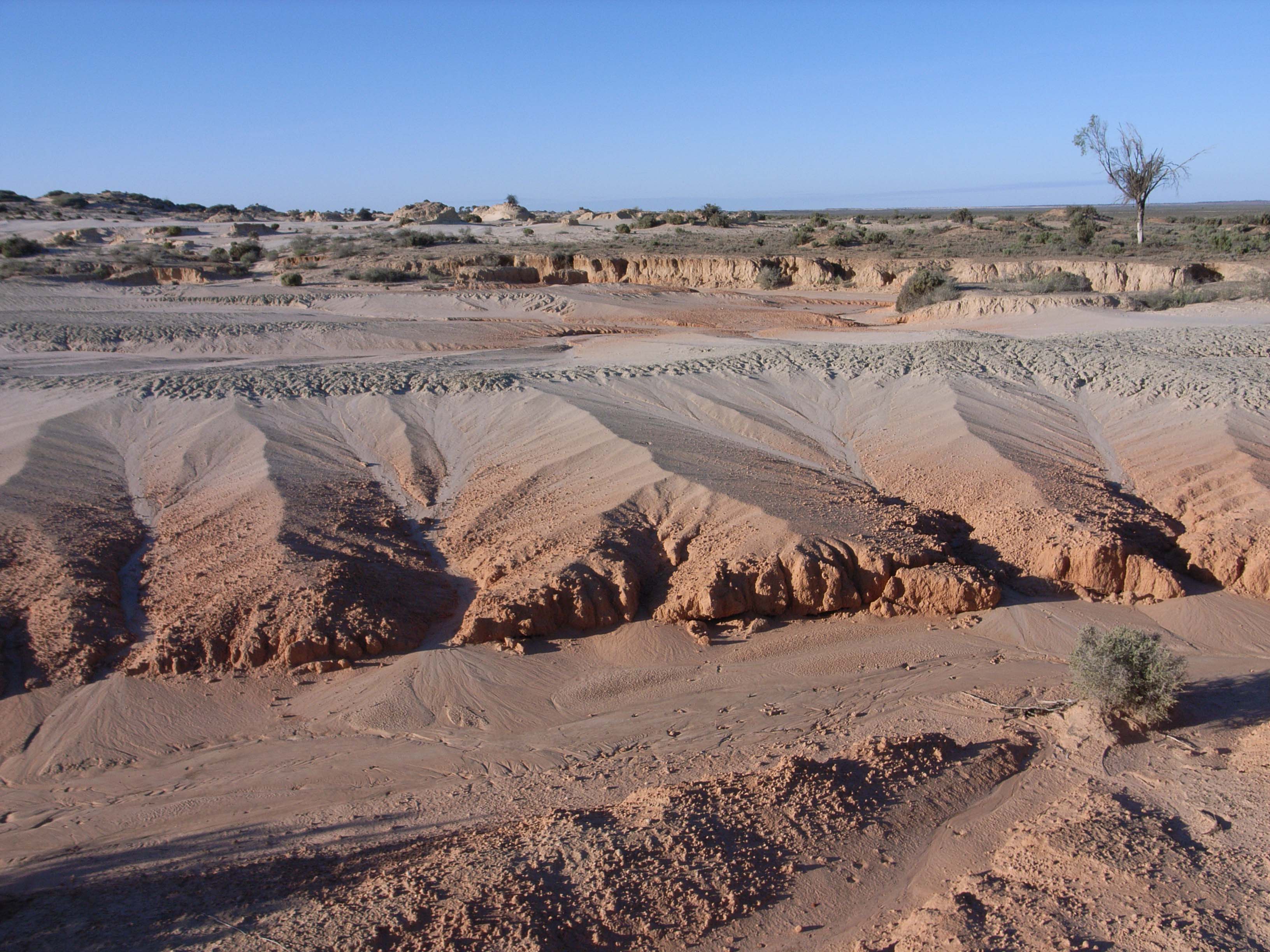Resource sharing

The Australian Inland is rich in resources. These resources have created and nurtured the communities that have grown up around them.
With a particular interest in the Murray-Darling Basin, our researchers bring interdisciplinary perspectives to water management and the ongoing environmental legacy of mining in the area. The use of waterways of the Murray-Darling Basin for trade and livelihoods by Aboriginal peoples created ancient landscapes that remain sites of cultural and spiritual significance. The changed conditions of land and water use brought by Europeans dramatically transformed this environment. Now these communities need to grapple with water scarcity and how to balance the desire to expand and support industry with the environmental and domestic impact of those choices.
Current projects
The Murray-Darling Water and Environment Research Program (WERP) is an Australian Government initiative to strengthen scientific knowledge of the Murray-Darling Basin.
It is designed to help inform water and environment management decisions which will improve outcomes for the Basin and its communities.
Led by Prof Nick Bond, from La Trobe’s Centre for Freshwater Ecosystems and in collaboration with researchers from Griffith University and our centre, we are working on two of the priority themes of the project: Environmental outcomes; and Social, economic and cultural outcomes.
The social research component of the project seeks to identify the diverse underlying values people attach to their environments, particularly water, the ways these are revealed in periods of change, and how conflicts around values have been accommodated and managed in the Murray Darling Basin. The project involves CSI’s Prof Katie Holmes, Dr Heather Downey and Dr Tim Clune in collaboration with Prof Sue Jackson and other researchers from the Griffith Rivers Institute.
Conflict over water is one of the most pressing and contentious challenges for modern Australia and its resolution will require a cultural change in how Australians relate to and share water. Nowhere is this more apparent than in the Murray-Darling Basin (MDB).
Cultural and historical analysis is essential to understanding the role of the MDB in Australian social and cultural life, the pre-existing conditions of current water disputes, and the formation of influential approaches to land and water management.
This Australian Research Council funded research project aims to enhance public understanding of the formation and evolution of cultural attitudes, values, norms, and practices relating to water in the MDB. The project is led by Prof Sue Jackson (Griffith University) and includes CSI’s Prof Katie Holmes and Dr Karen Twigg.
Prof Clare Wright is currently writing a book about the history of the Yirrkala Bark Petitions. This project aligns with the Centre for the Study of the Inland’s Key Research Area of Resource Sharing, including equitable land sharing.
The Petitions were presented by the Yolŋu people of northeast Arnhem Land to the Menzies Government in 1963, protesting the lack of consultation over bauxite mining on their land. This book forms the third instalment of her Democracy Trilogy. It will be published by Text Publishing in 2023.
This small research project focuses on the problem of water for the inland town of Broken Hill, situated on Wilyakali Country in far west New South Wales. The town has been sustained since its inception by the relocation of water from elsewhere. Water has been moved from many places in many ways, expanding in scale and technique, and funded by a mix of government and industry. Over time, the increase in demand for water for both industry and domestic use has further dislocated the town from the biophysical realities of its location.
Researchers: Prof Katie Holmes & Dr Lilian Pearce.
- Lead CI: Prof Susan Lawrence
- co-CIs Dr Peter Davies (LTU) and,
- Dr Anna Lintern (Monash University)
- Dr Larissa Schneider (ANU)
- Dr Lilian Pearce (LTU).
This project aims to investigate how historical mining activities in Victoria have left a toxic legacy of heavy metals in soil and water. Using an integrated approach between historical archaeology, environmental humanities, and the physical sciences, the project seeks to generate novel datasets that document the spatial distribution of contaminants. This will allow a better understanding of the impact of mining heritage on the landscape. Anticipated outcomes include new knowledge about pre-industrial background levels of heavy metals in the environment, more efficient and targeted remediation of former mine sites, and improved dialogue between heritage and environmental managers. The project promises significant benefits for future land and water management and approaches to mining heritage. This project is Australian Research Council Discovery Project DP220101967